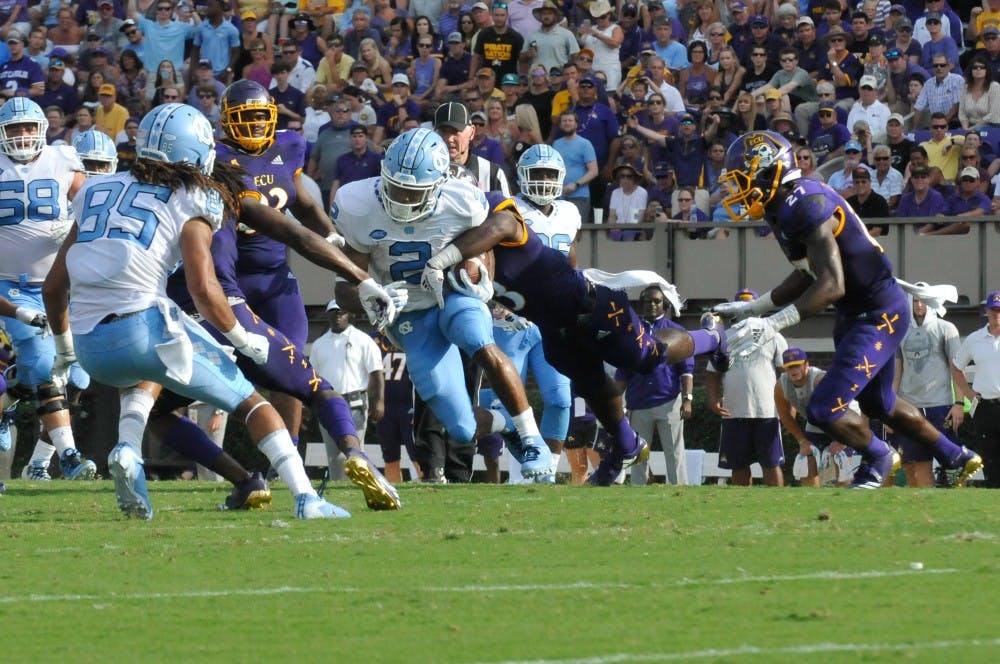A lot of people think they know who the North Carolina football team is.
The Tar Heels (0-2) are in the midst of a free fall that started with a loss to N.C. State on Nov. 25, 2016 and continued in their most recent loss — a 41-19 beatdown at the hands of ECU, who had been picked to finish last in the American Athletic Conference East Division in the conference's preseason poll. At the end of the day in Greenville, discontent had risen to a new high.
With Hurricane Florence bearing down on North Carolina’s coast, the state ground to a halt for a week. Rescue and recovery efforts have taken place across the state, taking obvious precedent over football and leading to a cancellation of UNC’s game with UCF last week.
The football team did not sit idly by, as it contributed money and supplies as well as using its equipment truck to help move resources to Eastern NC.
As Chapel Hill returns to normalcy, the team will try to get back on track against Pittsburgh (2-1, 1-0 ACC). With extra time to watch tape, write game plans, practice and get healthy, the hiatus served as a quiet reset.
The Tar Heels emerge from the break with another chance to tell fans who they really are.
The less-seasoned offensive line has yet to reach its full potential, contributing to the unease and rush facing quarterback Nathan Elliott on every snap. The offense has only produced three touchdowns this season, and only one of those was in the air, when Elliott connected with wide receiver Anthony Ratliff-Williams with 1:13 left in the game against Cal.
A Pitt defense that is No. 25 in the nation in passing yards allowed won’t add any comfort for Elliott, or first-year Cade Fortin, who likely will see more playing time if Elliott continues to struggle.
Without Elliott finding a rhythm in the pocket, the Tar Heels have seen more action from Ohio State transfer junior running back Antonio Williams. Williams ran for 96 yards before being ejected in the second quarter of the ECU game for targeting, and he along with Jordon Brown make up a duo of backs that could help alleviate pressure on the quarterback if they both stay on the field.




